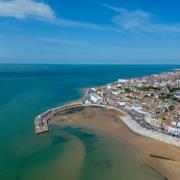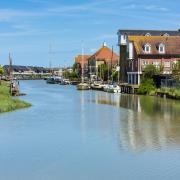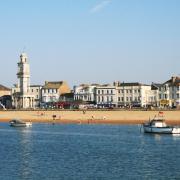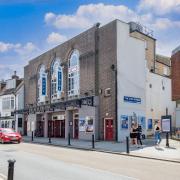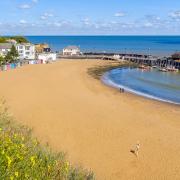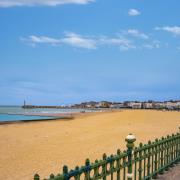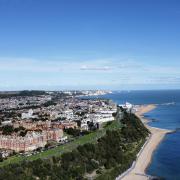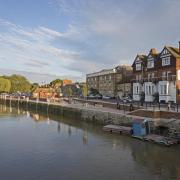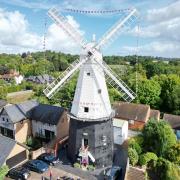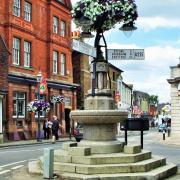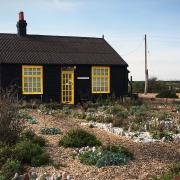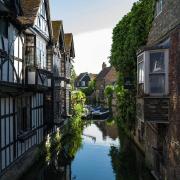Still best known as our ‘frontline town’ due to its role during the war, Dover overlooks the narrowest part of the English Channel, while its delightful neighbour St Margaret’s was a favourite haunt of Bond author Ian Fleming

Dover has always been the gateway to Britain and while the past few decades have seen the seaside town weather more than just the occasional storm, it is finally receiving some much-needed attention. Just one of the many parts of Kent undergoing regeneration, Dover is setting itself up as a modern, attractive and prosperous town.
It already has a superb location going for it. With a shingle beach, sheltered within the harbour walls, there’s a real seaside resort feel to the place. It’s also well connected, as you’d expect for a port with a ferry terminal, with train times to London starting at just over an hour on the high speed to St Pancras. And best of all, there’s always been a strong continental feel to what is our nearest town to France.
Among its attractions, Dover Castle, Dover Museum, the South Foreland Lighthouse and the town’s Roman Painted House show an area rich is history. And recently, one of Dover’s most important buildings, the listed 800-year-old Maison Dieu (also called Dover Town Hall), was upgraded from a Grade II* to a Grade I, with plans for a major restoration of the building.
But it’s not all about the past. Like many of our seaside towns, regeneration is the buzz word in Dover today, with a long list of developments and plans. It is a town looking to preserve the past and improve the future.

The past
Dover’s strategic position has always been its greatest asset and its greatest threat, with settlements here since the Bronze Age. When the Romans invaded, it became a fortified port known as Dubris, with a large harbour flanked by two lighthouses and three forts. More than 60 Roman sites have been uncovered in the area, including Dover’s Roman Painted House –thought to be the best-preserved example of a Roman house in the country (www.theromanpaintedhouse.co.uk).
One of the Cinque Ports, it has also been important as a line of defence against invaders. It was heavily bombed during the Second World War and much of the town was rebuilt in the 1960s.

Dover Museum (www.dovermuseum.co.uk) offers a fascinating insight into the history of the area, and exhibits here include the remains of a Bronze Age boat.
Formidable Dover Castle, as we see it now, was founded in the 11th century and has been called the most important castle in the country. The town’s major tourist attraction, visitors come to see not only the ancient stronghold, but also its complex of Napoleonic underground barracks tunnels, a rare Roman lighthouse on the site and the secret underground headquarters where Churchill planned Operation Dynamo.
It’s a treat for history lovers of all ages and one of the county’s greatest landmarks. Visit www.english-heritage.org.uk for details.
The future
The town is going through a number of improvements, with Dover Town Team tasked with sprucing up the High Street, not-for-profit company LoveDover planning to fill empty shops and the construction of a new water feature in Market Square.
There are also ambitious plans to redevelop the waterfront, with the first stage of construction now underway. The £135m project will include a new cargo terminal, a waterfront development and a marina with a pier. Known as the Dover Western Docks Revival, it will provide jobs for local people, create new leisure facilities and a new piazza and marina with shops, bars, cafés and restaurants.
Meanwhile, plans are also going ahead for a retail and leisure park in Dover. The £53m St James Development is scheduled for opening this autumn. The development includes a six-screen cinema, restaurants and several retail units, along with parking for 445 vehicles.
Alongside this, Dover’s existing De Bradelei Wharf shopping complex is also undergoing a transformation. Following its sudden closure in October, the Port of Dover and the new leaseholder, JB Armstrong, worked to have it up and running again in a matter of weeks.
They were considering a new name for the centre at the time of writing but many of the current concessions will be remaining, with several new brands signed up to join them.
Finally, there’s a plan for a new £26m leisure centre on a site at Whitfield. Facilities are set to include an eight-lane pool with spectator seating for 250 people, a learner pool, four-court sports hall, squash courts, multi-function room, gym, fitness studios, climbing wall and a café.
Eating out
When it comes to eating out, the area has a lot to offer. Some to consider include seafood restaurants Hythe Bay and Cullin’s Yard, Dino’s Italian, La Scala, The Waterfront at Dover Marina Hotel, Namaste Indian restaurant and The Allotment (see our Postcard from Dover).
Others in the Dover area include Wallett’s Court Hotel, The Smugglers and The Cliffe Kitchen at The White Cliffs Hotel in St Margaret’s at Cliffe and The Marquis restaurant with rooms in Alkham.
For coffee or a light bite try La Salle Verte or The Mean Bean in Dover, or The Pines Garden tea room or Shelly’s tea room in St Margaret’s. Also well worth a visit is the National Trust Visitor Centre café, set on the White Cliffs and boasting stunning Channel views.
St Margaret’s
Comprised of St Margaret’s at Cliffe village and the stunning St Margaret’s Bay cove, the community of St Margaret’s is up the coast a little from Dover. In the quaint village you’ll find a handful of ancient pubs and traditional tea rooms. Down at the bay there is a sheltered shingle beach, perfect for watersports, along with plenty of parking, a kiosk selling refreshments and public toilets.
While you’re here, be sure to visit the lovely Pines Garden Tea Room (www.baytrust.org.uk). Set on the winding road from St Margaret’s at Cliffe village down to the bay, it was originally an old rectory but is now an outdoor learning centre with an environmentally friendly conference and events venue. Visitors can enjoy lunch in the beautiful garden tea room, with much of its fresh produce grown on site. It even has a little museum looking into the history of the area.
Charming as it is, however, it’s probably not what comes to mind when you think of James Bond. But in fact, St Margaret’s was a favourite haunt of author Ian Fleming. Introduced to the area by Noel Coward, who invited him to stay in one of the houses he owned at the far end of the bay, Fleming fell in love with it. He and his wife would go on to buy Coward’s house in 1951 and remained there for several years.
If you’re a Bond fan, you can even spot local references in the books. It was between the cliffs of St Margaret’s and Kingsdown that Fleming sited the missile in Moonraker, while the Royal St George’s club in nearby Sandwich is the setting for the golf scene in Goldfinger.
Property prices
Dover is refreshingly affordable. Asking prices for one-bedroom flats start at just £75,000. Two-bed properties are available for between £95,000 and £280,000, while three-bedroom houses can be on the market for between £130,000 and £450,000. Larger properties are available up to around £1.2m.
Getting there
Dover is easily accessible by car, train and coach thanks to its port. Dover Priory station has connections to London averaging one hour and 37 minutes and the town is approached by car via the M20 or M2/A2.
Postcard from Dover
I’m Victoria Pasquino, a born and bred Dovorian. I own The Allotment restaurant on the High Street, opposite Dover Town Hall. The Allotment is a beautiful building, with original stained-glass windows; it offers a contemporary feel with a nod to elegant vintage. I bought the business in November, and have tried to create something for everyone. We offer locally sourced produce on the breakfast menu, a bistro-style lunch with an ever-changing specials board, afternoon tea served on vintage crockery and then the restaurant is open for evening dinner.
I am also a practicing fine artist and am currently studying Fine Art MA at UCA Canterbury. I am a collaborator with Dover Arts Development with other very talented local artists, and have been involved with Dover Big Local ART31, organising the art marquee at last summer’s successful Urban Fête, held in Pencester Gardens. I hosted ‘The Big Draw’ in The Allotment, which proved very successful and enticed many locals in to participate. The resulting artwork was then displayed in the Art31 gallery space.
There are many things to love about Dover. The incredible beauty of the cliff walks, where tea is served in the lighthouse; the seafront and its restaurants and bars; for an energising walk we have the Western Heights and surrounding hillsides, beautiful parklands of Kearsney and Connaught. The castle is a massive draw for tourism with regular event days for family fun, and the cruise terminal brings tourism straight into the town.
We are a diverse and exciting mix of people and cultures, a stone’s throw from France. With the new development project comes new opportunity, and recent new businesses include restaurants and even Dover’s very own brewery (www.breakwater.beer).
Wish you were here!




